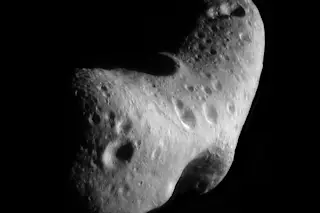This image shows a close-up view of Eros, an asteroid with an orbit that takes it somewhat close to Earth, though not nearly as close as 2012 DA14 will be on Friday. Image courtesy of NASA/JHUAPL On Friday, February 15, astronomers will get an unusually good look at a near-Earth asteroid called 2012 DA14. It will be the first time a known object of this size will come this close to Earth---a mere 8 percent the distance between us and our moon. The asteroid, which measures 150 feet across, was first spotted by astronomers when it zoomed by Earth this time last year. This asteroid's fly-bys occur about once a year since its orbit around the sun is very similar to our own. There's no chance that the asteroid will collide with Earth but it will come pretty close. At its nearest point, there will only be 17,200 miles between ...
Asteroid Will Make Close Pass by Earth on Friday
On February 15, witness the near-Earth asteroid 2012 DA14 as it makes its closest fly-by in 30 years, just 17,200 miles away.
More on Discover
Stay Curious
SubscribeTo The Magazine
Save up to 40% off the cover price when you subscribe to Discover magazine.
Subscribe













